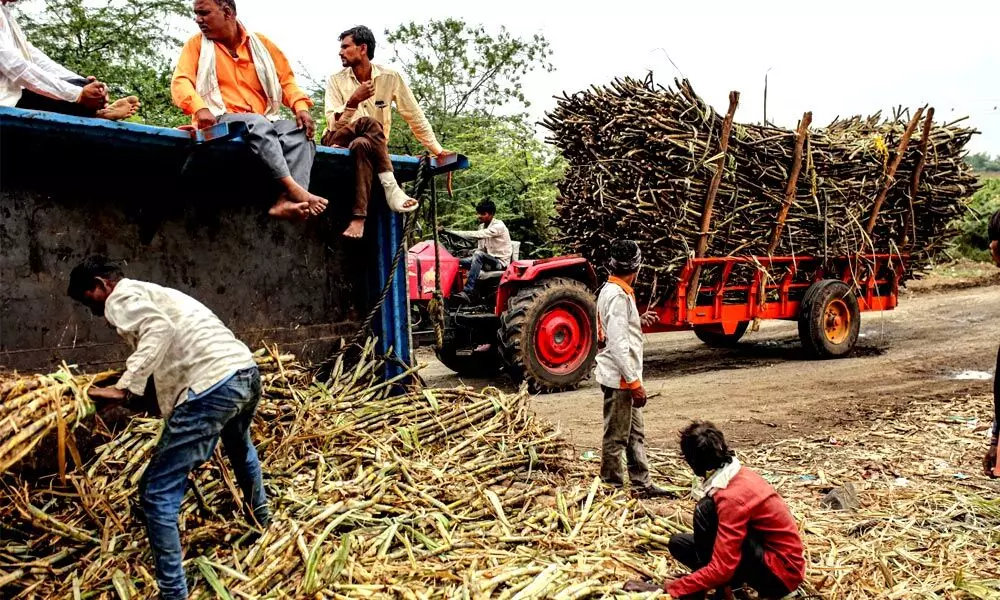Rising virus cases GDP recovery to hit slow lane
Raising spectre of localised lockdowns could hit consumer mobility and demand in an economy where consumption makes up some 60% of GDP
image for illustrative purpose

While central bank Governor Shaktikanta Das has said he doesn't see any immediate threat to activity, economists see a bumpy road ahead given that the western Indian State of Maharashtra, which contributes 14.5 per cent to the country's overall GDP, is among the worst hit and accounts for the majority of cases. The State, which includes Mumbai, has imposed a night curfew to tamp down cases that have been rising since mid-February
India's consumption demand and business activity looked steady in February, although chances of a strong recovery appeared doubtful after a sharp surge in virus cases and the increasing risk of renewed lockdowns.
The dial on a gauge measuring so-called animal spirits showed activity cruising at a steady pace for the fifth straight month, with all eight high-frequency indicators tracked by Bloomberg News holding their ground last month. The number was arrived at by using the three-month weighted average to smooth out volatility in the single-month scores.
Holding ground
The February reading reflects gains in the economy at a time when virus cases were on the wane. However, the recent weeks have seen the trend reverse, raising the spectre of localised lockdowns that could hit consumer mobility and demand in an economy where consumption makes up some 60 per cent of gross domestic product.
While central bank Governor Shaktikanta Das has said he doesn't see any immediate threat to activity, economists see a bumpy road ahead given that the western Indian State of Maharashtra, which contributes 14.5 per cent to the country's overall GDP, is among the worst hit and accounts for the majority of cases. The State, which includes Mumbai, has imposed a night curfew to tamp down cases that have been rising since mid-February.
Business activity
Activity in India's dominant services sector expanded at its quickest pace in a year in February, helped by an increase in new orders and optimism generated by a roll-out of vaccines. The IHS Markit India Services Purchasing Managers' Index rose to 55.3 last month from 52.8 in January, with a reading above 50 signalling expansion.
Robust recovery
A similar survey earlier showed activity in the manufacturing sector also expanded, helping lift the composite index to a four-month high of 57.3 last month. As a result, input price inflation quickened, pushing the aggregate rate of cost inflation to an 88-month high - a wrinkle for the nation's inflation-targeting monetary policy makers who meet early next month to decide on interest rates.
Exports
Exports were up 0.7 per cent year-on-year last month, slower than the 6.2 per cent rise seen in January. More importantly, imports rose 7 per cent as non-oil and non-gold imports saw robust growth, mirroring domestic demand.
Consumer activity
Passenger vehicle sales, a key indicator of demand, rose nearly 18 per cent in February from a year ago, with two-wheelers and tractor sales leading the pack.
Demand for loans picked up. Bank credit grew around 6.6 per cent in February from a year earlier, faster than the 5.9 per cent rise seen in late January, central bank data showed. Liquidity conditions were little changed. Bloomberg Economics' Abhishek Gupta said a pullback in surplus liquidity, as well as rising yields, pose a risk to loan demand.
Industrial activity
Industrial production contracted 1.6 per cent in January from a year earlier. Consumer non-durables, comprising essential goods, contracted 6.8 per cent in January, while demand for white goods and mobile phones shrank 0.2 per cent.
The output at infrastructure industries, which makes up 40 per cent of the industrial production index, rose 0.1 per cent in January from a year ago, after 1.3 per cent contraction in December. Both data are published with a one-month lag.

